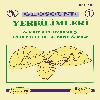Predicting spontaneous combustion tendency of coal with proximate analysis
Kömürde kendiliğinden yanmaya yatkınlığın kısa kimyasal analiz ile belirlenmesi
___
- Banerjee, C.S., (1985). Spontaneous Combustion of Coal and Mine Fires, Balkema, Rotterdam, p.168.
- Didari, V., (1986). "Spontaneous combustion of coal in underground and risk indices.", Madencilik, 25(4), 29-33. (In Turkish)
- Eroglu, N., and Gouws, J.M., (1993). "Theories of Spontaneous Combustion of Coal.", Madencilik, 32(2), 13-18. (In Turkish)
- Eroglu, N.H., (1992). "Factor affecting the spontaneous combustion index", University of the Witwatersrand, Johannesburg, PhD Thesis, 269 pages.
- Karpuz, C., Guyaguler, T., Bagci, S., Bozdag, T., Basarir, H., Keskin, S., (2000). "Determination of spontaneous combustion tendency of lignites: Part 1-Risk classification.", Madencilik, September-December 2000, 3-13. (In Turkish)
- Kaymakci, E., (1998). "Development of a method applicable to Zonguldak coal mines, for the evaluation of the natural tendency to spontaneous combustion.", ZKU PhD Thesis, Zonguldak, 148 pages. (In Turkish)
- Kucuk, A., (1995). "An investigation on the spontaneous combustion tendency of Aşkale lignite.", MSc Thesis, Atatürk University, Erzurum, 56 pages. (In Turkish)
- Mahadevan, V., and Ramlu, A.M., (1985). "Fire risk rating of coal mines due to spontaneous heating", J. Mines, Metals and Fuels, August 1985, 357-362.
- Yildirim, S.O., (2002). "Electrical, Color and Thermogravimetrical Modelling of Spontaneous Combustion Tendency of Coal.", PhD Thesis, S. Demirel University, Isparta, 311 pages.
- ISSN: 1019-1003
- Yayın Aralığı: 1
- Başlangıç: 1986
- Yayıncı: Çukurova Üniversitesi Jeoloji Mühendisliği Bölümü
Ahmet Turan ARSLAN, Yalçın KOCA, Taner AYDOĞMUŞ, Zafer AKÇIĞ
Gökçeyazı-Kuskuncuk (Ereğli-Konya) çevresindeki görsel stromatolitlerin fasiyes özellikleri
Hidrojen ve alternatif enerji kaynağı Sodyum Borhidrür
Turan BATAR, Necmettin ERDOĞAN, Bayram KAHRAMAN, Mustafa ÖZEL, Erol KAYA
İsahocalı (Kırşehir) ve Feke (Adana) fluoritlerinde nadir toprak elementi (NTE) jeokimyası
Yusuf URAS, Fevzi ÖNER, Servet YAMAN
Flotasyon hidrodinamik değişkenlerinin kontrolü ile flotasyon etkinliğinin artırılması
B. Zümrüt YILMAZER, E. Cafer ÇİLEK
Landsat 5 TM uydu görüntülerinde bazı litoloji ayrım yöntemlerinin karşılaştırılması
Sediment permeabilitelerinin hesaplanmasında yapay sinir ağları modeli
Gürsel KANSUN, S. Sinan GÜLTEKİN, A. Ferhat BAYRAM
Orta Toroslar' da Namaras-Eğrigöl arasında yüzeyleyen Anamas Akseki istifi' nin stratigrafisi
Cavit DEMİRKOL, Ulvi Can ÜNLÜGENÇ, Erdem ÇÖREKÇİOĞLU
Improving the value of talc minerals by flotation and flitration methods
Kömür su karışımları tekolojisinde farklı yapıdaki Türk kömürlerinin stabilite özellikleri
